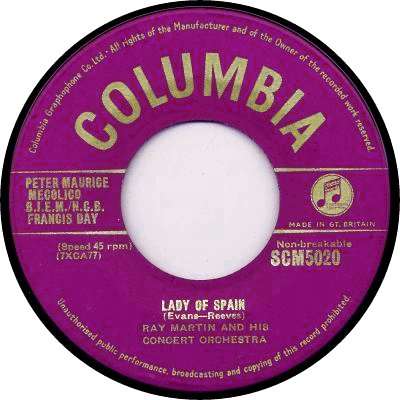
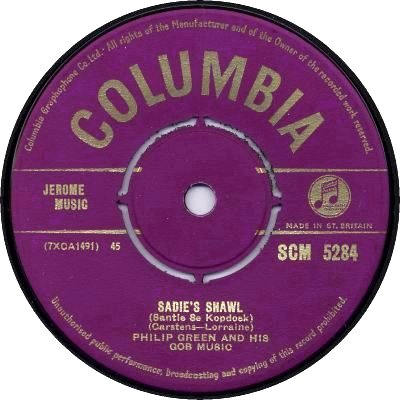
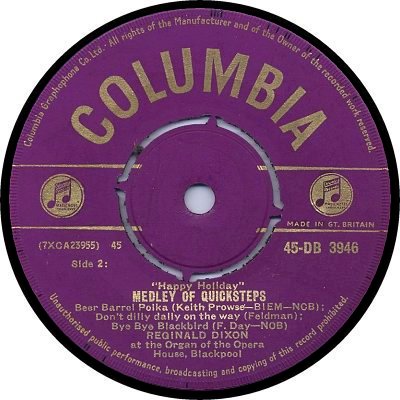
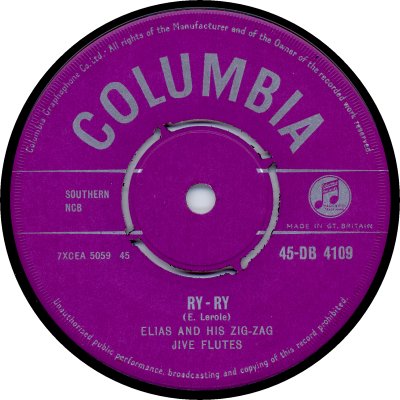
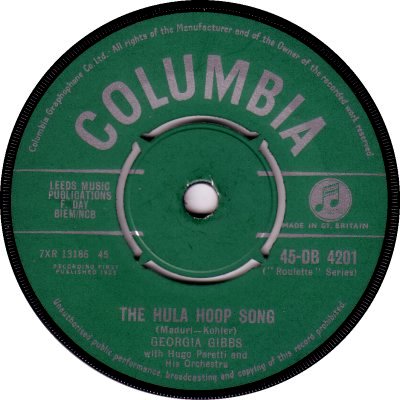
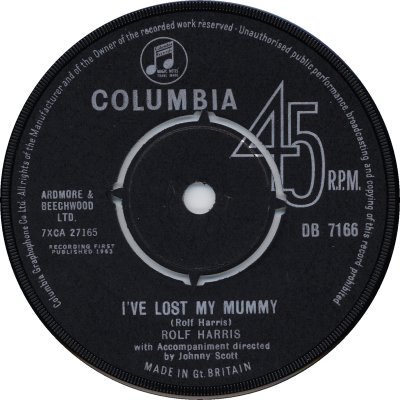
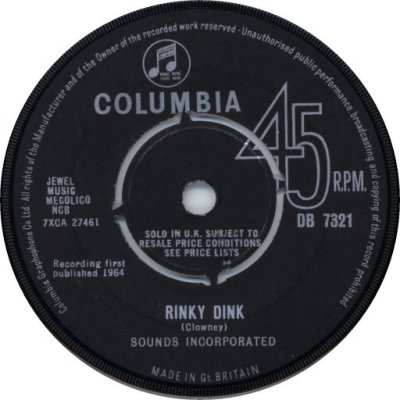

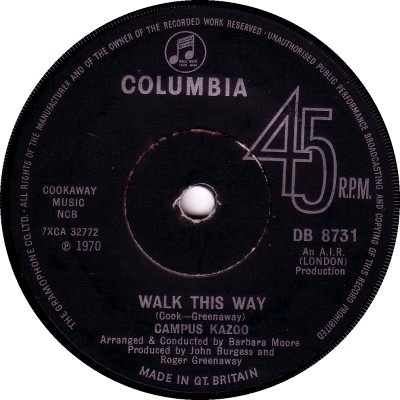

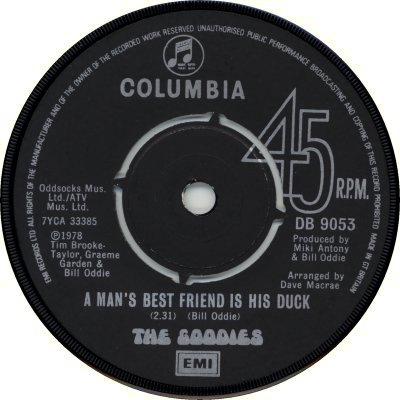
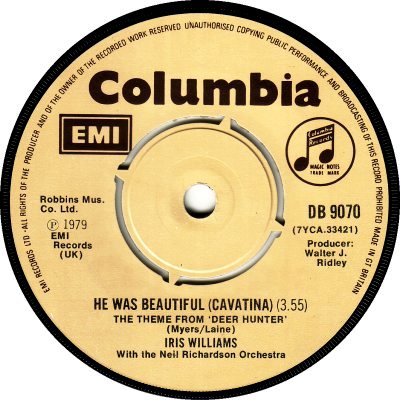
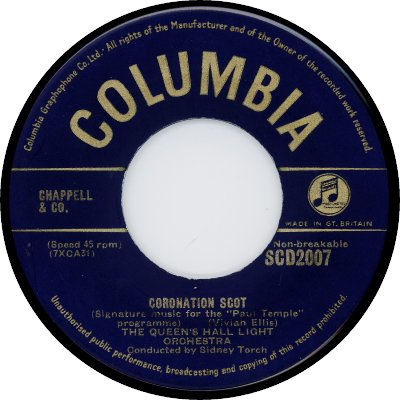
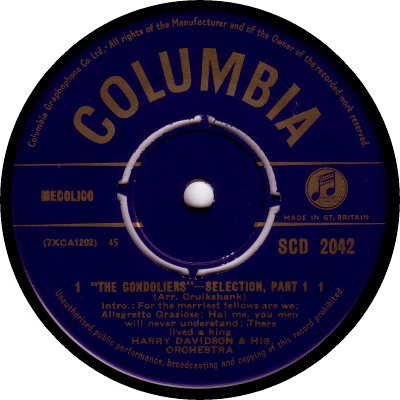
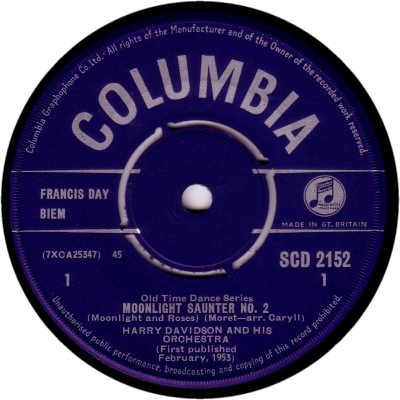

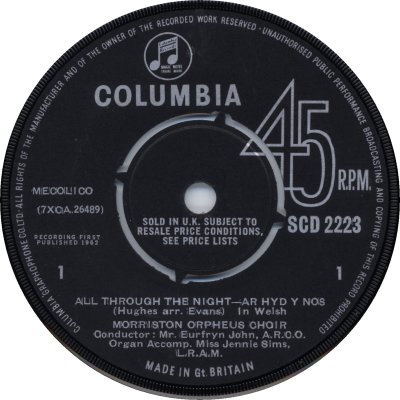
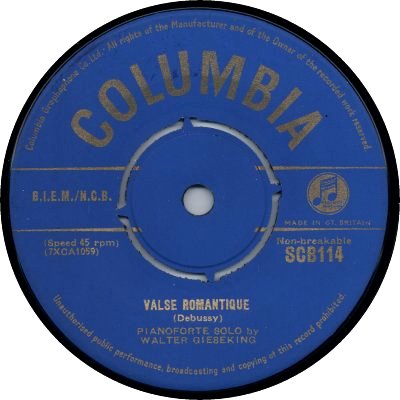
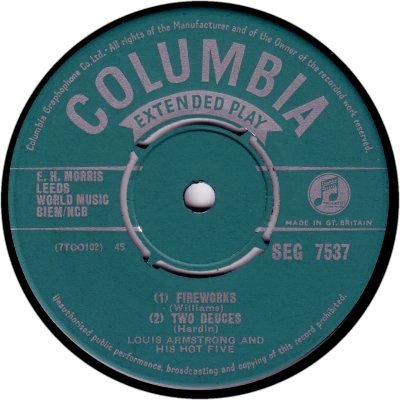
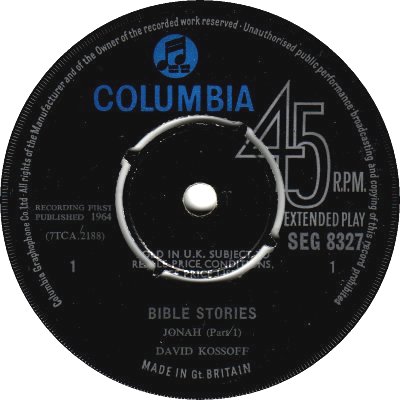
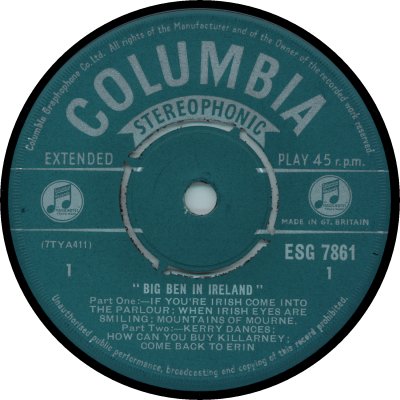

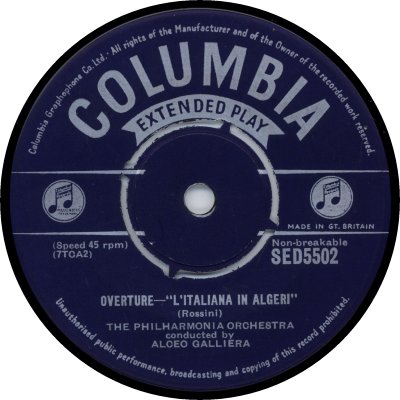
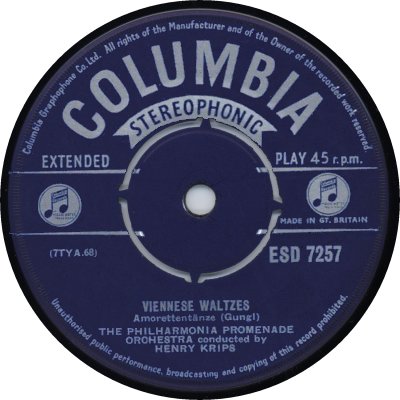

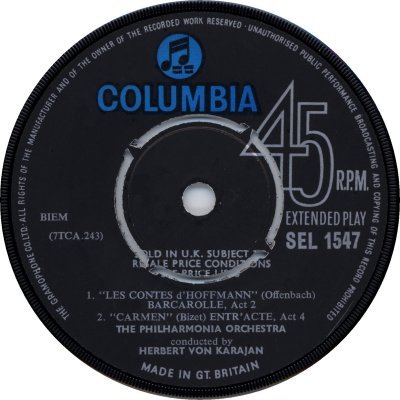
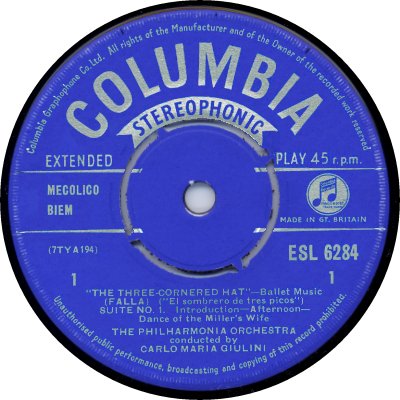
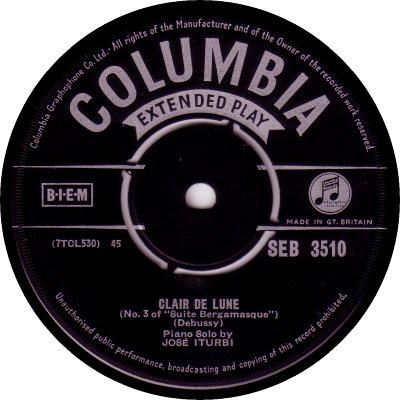
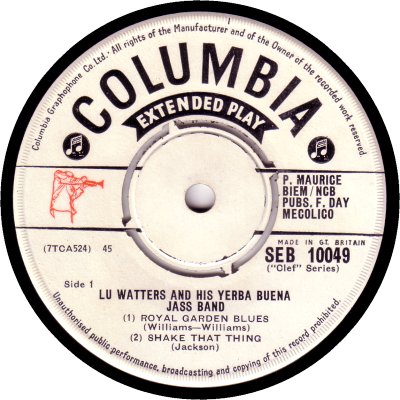
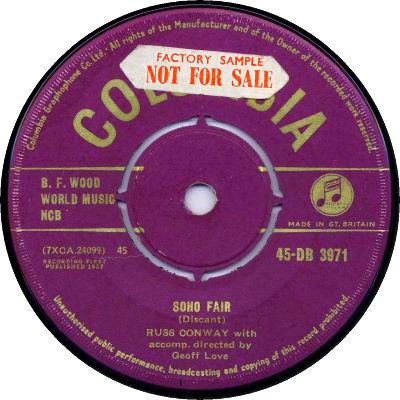

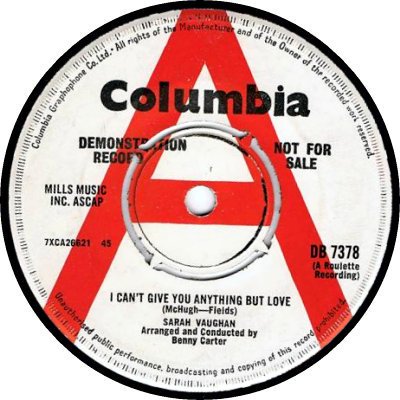
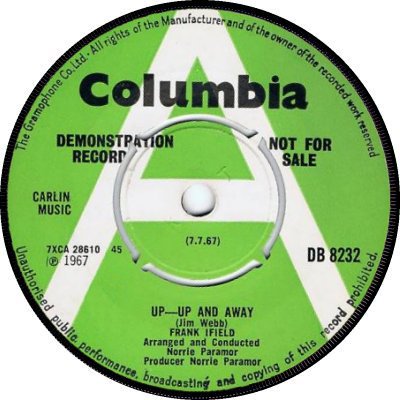
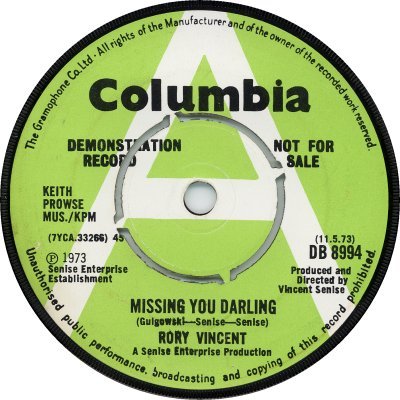
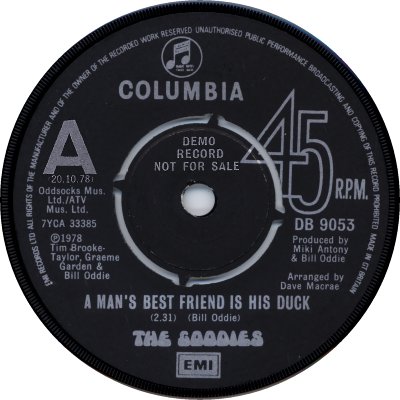
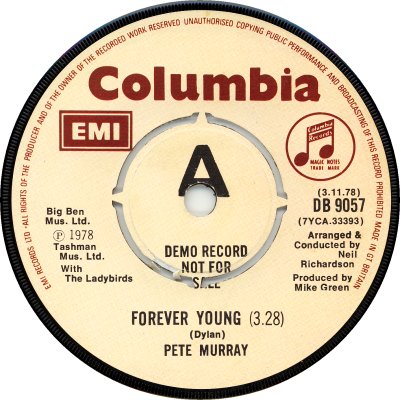
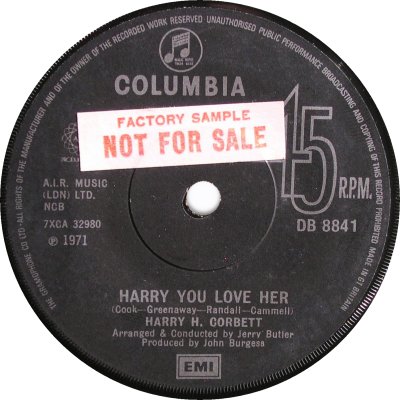
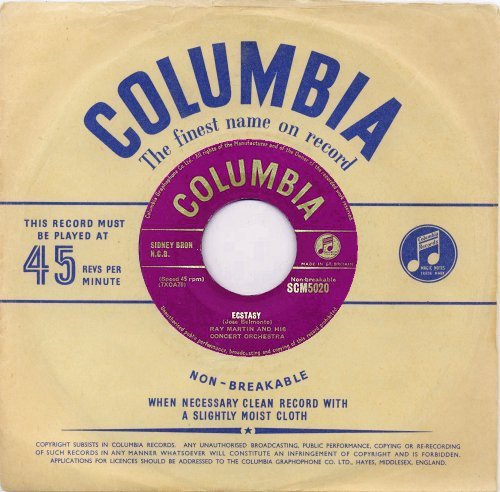
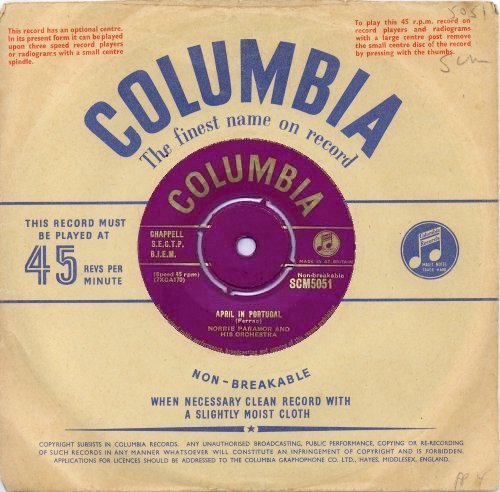
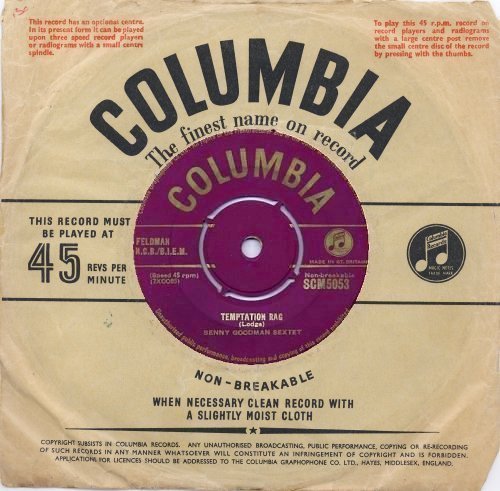
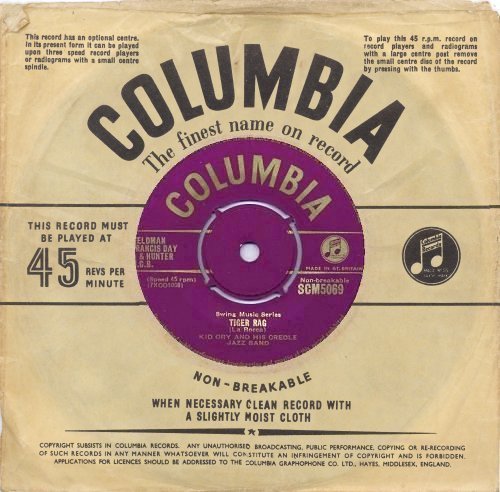
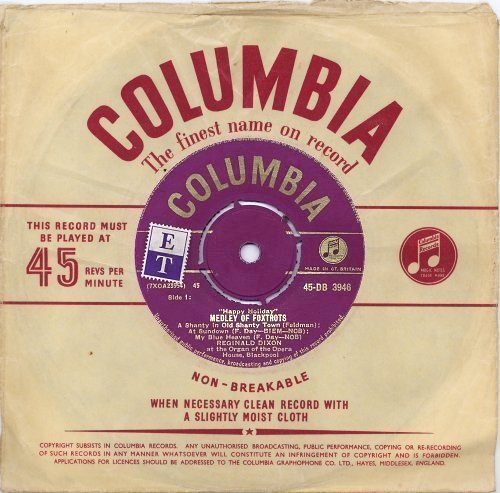

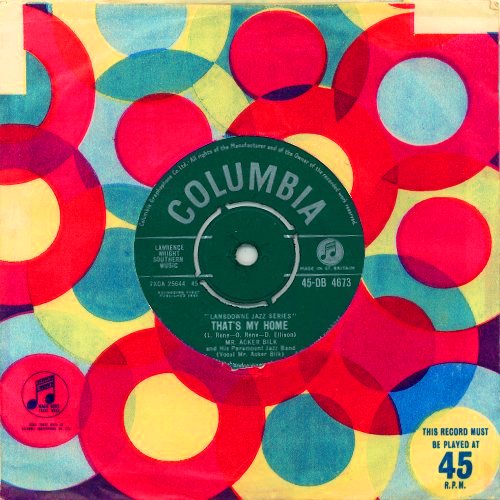
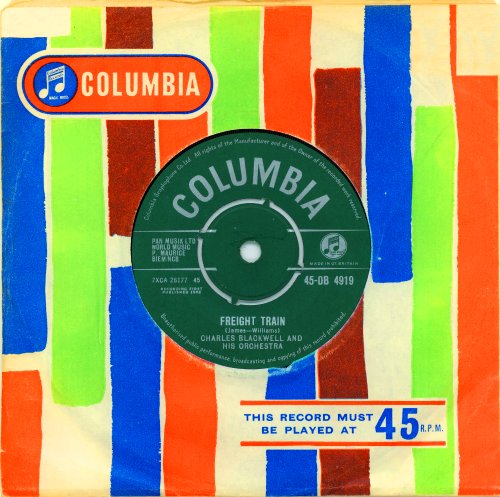
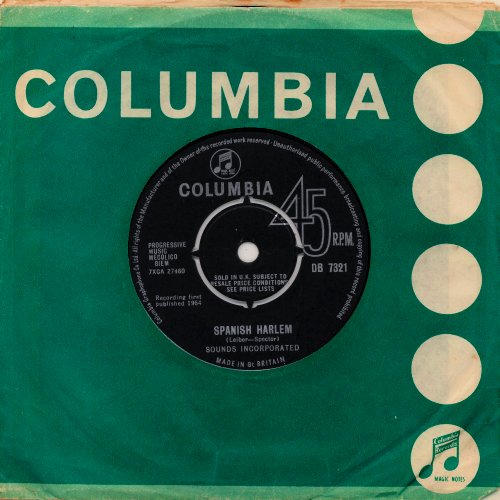
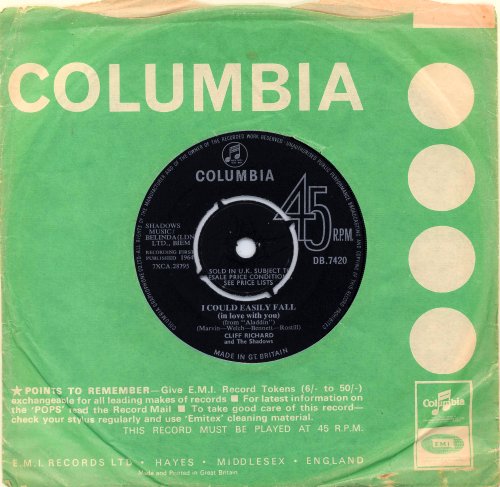
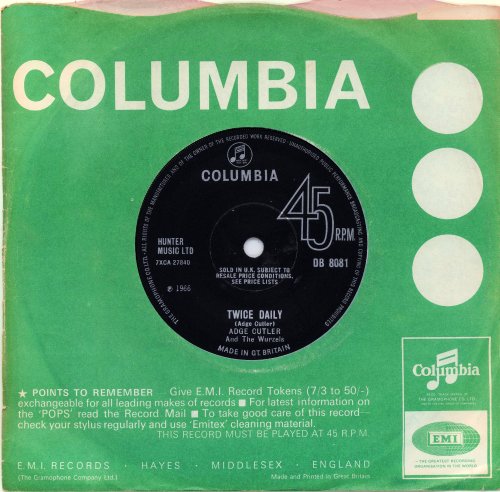
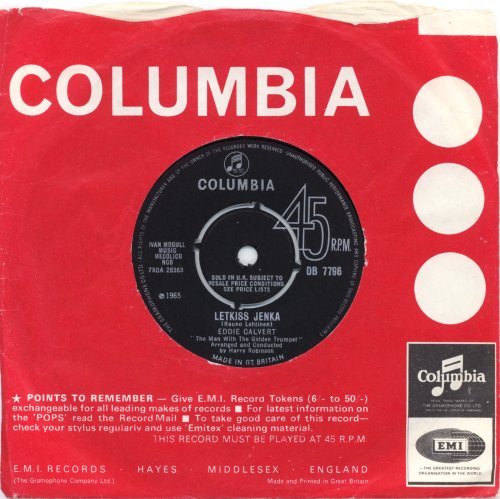
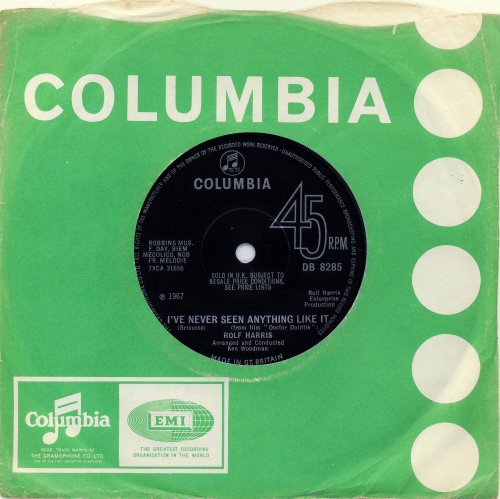
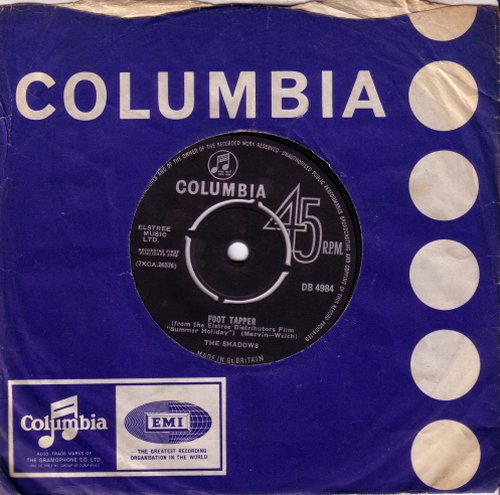
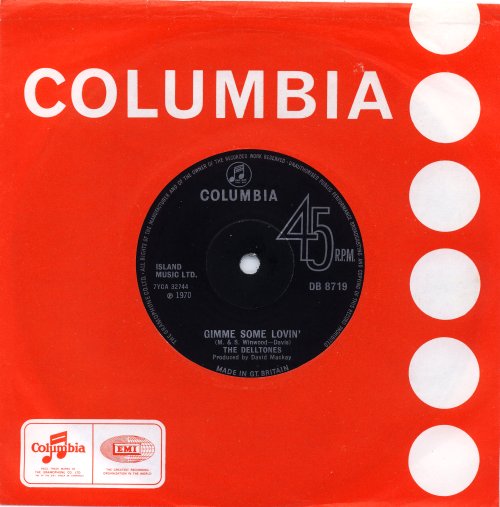
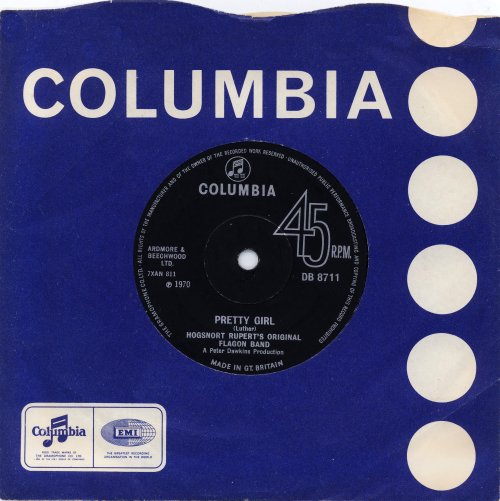

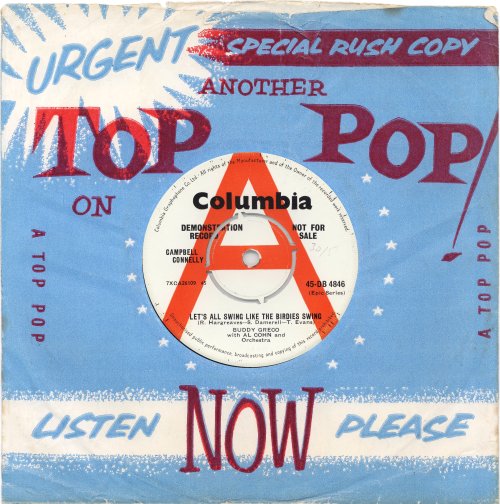
Columbia started out as the British division of the Columbia Phonograph Company of America. When that company hit financial difficulties, in 1923, it sold its British arm. In 1931 the British Columbia company merged with the Gramophone Company to form Electrical and Musical Industries, which later morphed into EMI. During the 78rpm era a lot of material licensed from RCA and US Columbia came out on the British 'Columbia' label. When those licensing agreements ended, in the mid-1950s, Columbia was successfully developed as a home-grown Pop label, with artists such as Cliff Richard, the Shadows, Shirley Bassey, Gerry and the Pacemakers, the Dave Clark Five, and Herman's Hermits. In the late 1960s and into the '70s it seems to have developed something of a 'Music for Moms and Dads' personality, with its sister label Parlophone leaning towards the younger generation; its chart-toppers in the early '70s were Clive Dunn's 'Grandad' (DB-8726; 10/70), Benny Hill's 'Ernie (The Fastest Milkman In The West)' (DB-8833; 10/71), and 'Eye Level' by the Simon Park Orchestra (DB-8946; 11/72). Hurricane Smith provided a couple of Top 5 singles with 'Don't Let It Die' (DB-8785; 5/71) and 'Oh Babe, What Would You Say' (DB-8878; 3/72), and The Congregation provided another in the shape of 'Softly Whispering I Love You' (DB-8830; 10/71). Despite these successes, however, trouble was looming. In a corporate shake-up in 1973 EMI launched the EMI label. 'Music Week' of the 27th of January revealed that as a consequence of the new label's arrival four old-established ones would be phased out: Parlophone, Stateside, Regal Zonophone - and Columbia. Parlophone succumbed quite quickly, becoming basically an outlet for the Beatles by the end of October; Stateside and Regal Zonophone hung on into 1974, while Columbia lasted until the end of 1975. After that point, artists whose records would previously have appeared on the label were shifted on to EMI and Columbia languished.
Happily, that was not the end of the story. While no singles at all appeared on Columbia during 1976-77 it enjoyed a revival in 1978 and saw the decade out as more or less EMI's dedicated MOR / Easy Listening label. It even managed to return to the charts in 1979, with Iris Williams's version of 'He Was Beautiful' (DB-9070; 9/79). Another lull followed: DB-9091 came out in 1980, but 9097 didn't appear till 1984. 1985-86 saw another, more wholehearted revival, with upwards of sixty singles being issued. Most of these seem to have been Pop / MOR things, including a Christmas record by ventriloquist's dummy Orville the duck ('White Christmas'; DB-9121). For some reason there was a rash of football singles in there: the squads of England, Scotland, Liverpool, Everton and Manchester United all recorded for the label during that period. That, however, appears to have been Columbia's final flowering. In the 1990s the label was sold to Sony, and was reunited with the US Columbia company.
Columbia 7" singles used an SCM-5000 numbering system initially, as the DB-3000 series was being used by 10" 78rpm discs; many records appeared in both formats with different numbers. According to Paul Pelletier in his Complete British Directory of Popular 45rpm singles, the SCM numbers were abandoned in 1956, at which point 7" records started sharing the DB-3800 numbering with the 10" 78s - the 'DB' singles prefix dates back to 1930, which is when DB-1 appeared. The last 78s seem to have come out in 1960, after which point the DB series was 7" only. There was a jump from DB-4999 to DB-7001 in 1963; by the end of the '70s the numbers had climbed into the DB-9000s.
Several different label designs were used. The 7" SCM series started off in January 1953, using mauve labels with gold printing and large spindle holes (1). In July of that same year the large spindle holes were replaced by push-out centres (2) - an experiment with replaceable 'Jigsaw' push-out centres in 1957 failed to give positive results and was soon abandoned. As noted above, August 1956 saw the end of the SCM series, and from then on DBs were used for 45s as well as 78s; the colours and design of the label remained unchanged (3). The gold printing was replaced by silver in July 1957 (4), and the mauve turned to green a year later (5). In November 1962 the design was revamped: the trademark 'two notes' moved to the top of the label, a large '45' appeared on the right hand side, the name 'Columbia' shrank and straightened out, and the colour turned to black (6). This design remained basically the same until mid 1975, when the label was put into hibernation. There were minor changes: the legend 'Sold In U.K. (etc)' appeared under the spindle hole from February 1964 (7) and disappeared in June 1969 (9), while the legend around the perimeter of the label, which had previously been in a mixture of upper- and lower-case letters became upper-case only from the end of August 1964 (8). The wording also changed slightly from time to time: a reference to 'Columbia Gramophone Co.' at eight o'clock became 'The Gramophone Company' in October 1965, and then changed again to 'EMI Records' in October 1973 (11) with the release of DB-9016. The EMI logo could be found at the bottom of the label from September 1971 onwards (10). When Columbia was revived, in August 1978, the same black label was used initially, but in October of that year, from DB-9054 onwards, the design was altered slightly and a pleasant brown-on-fawn colouring was adopted (12). This fawn label lasted into the new decade.
Returning to 1953: in addition to the SCM-5000s there was a more expensive SCD-2000s series; according to Paul Pelletier, at first this mainly featured the 7" equivalents of 12" 78 rpm records in the DX-1600 series, though some issues were 7" only. The labels were coloured dark blue initially, and like their mauve counterparts in the SCM series they had gold printing and large spindle holes (13). Changes in the label reflected those of the mauve SCMs, starting when the large spindle hole was replaced by a small one (14) inside the first year. The series was discontinued towards the end of 1955, but was revived in September 1959 for a mixture of 'Your Kind Of Music' records, Strict Tempo music and some Lansdowne Jazz issues; this time the print was silver (15), as it was for records in the main DB series. From September 1962 the same black label with silver printing was used for the SCDs that was used for the DBs (16, 17). Because of re-pressings popular singles can be found with blue or black labels. Again starting in 1953 there was also a comparatively short-lived SCB-100 series of singles for Classical music, which had a light-blue label with gold printing. Initially these, too, had large spindle holes, but later issues had the small type (18).
Turning to EPs, the '50s and '60s saw a number of different numerical series for different types of music; at first each series had its own dedicated label colour. The main Popular series started off in 1954 and initially had blue-green labels. Records were numbered in an SEG-7500 series (19), stereo EPs having an ESG prefix instead of the SEG, and the word 'STEREOPHONIC' under the logo (21). Before the introduction of picture sleeves EPs had their own special company sleeve (54). In late 1962 the labels underwent the same change of colour and design as that of the singles (20, 22); re-pressings mean that some popular EPs may be found with either greeny-blue or black labels. Slightly more up-market EPs - the counterpart of the SCD-2000 singles - had their own SED-5500 series, ESD-7000 for stereo records. The label (23) was the same blue colour as that of the SCD-2000s, and stereo records were marked accordingly (24). Classical EPs had three series to themselves: pride of place went to the main SEL-1500 one, which had light-blue labels (25) until the general change of design and colour at the end of 1962 (26) - again re-pressings meant that some lower-numbered EPs can be found with black labels. The stereo equivalent of the SEL-1500s was an ESL-6200 series (27). There was also a shorter-lived SEB-3500 series (28), which doesn't seem to have lasted past 1958. Jazz was catered for by white-labelled 'Clef' series of records (29) which ran from 1955 to 1959 and used numbers in the SEB-10000s. This featured records that were also available as 78 rpm records numbered mainly in the LB-10000s.
Early demos were white (31), and were single-sided until October 1957; from December 1960 a large red 'A' was added (32). In March / April 1967 the colour scheme became white on green, in common with other EMI promos (33). These green labels lasted until October 1973 with only minor changes (34). Later demos, both the black and fawn ones, were merely issue labels overprinted, in the usual EMI manner (35, 36). In common with those of other EMI labels Columbia singles sometimes came with 'Factory Sample' stickers on them (37); thanks to John Timmis for that scan. Sleeves came in a variety of designs and colours; I'm moderately sure that the ones shown above are in the right chronological order, but the blue ones seem to have been interspersed with the other colours. The 'Dancers' design (43) lasted for long enough to be used by both mauve- and green-labelled singles. There were many variations with regard to the cut of the top of the sleeves and to the printing on the back of them. During the period covered by this site black-labelled records came in the red or blue sleeves with a small round-cornered boxed logo at the bottom left (52, 53) up until around 1972; later issues had plain white sleeves. From c.1961-c.63 EMI's promotional singles sometimes came in a special sleeve (55), which can be moderately pricey nowadays - the record shown in the sleeve is from the right era but came to me separately from it. Red-labelled singles numbered from DB-115 to DB-119 dating from 1970 were the last gasp of the 'Columbia Blue Beat' series (q.v.), the first of which, DB-101, was issued in 1967. I have put together a discography for 1970s Columbia singles; it is on the large side, so I have put it on a separate page, here.


Copyright 2008 Robert Lyons.

